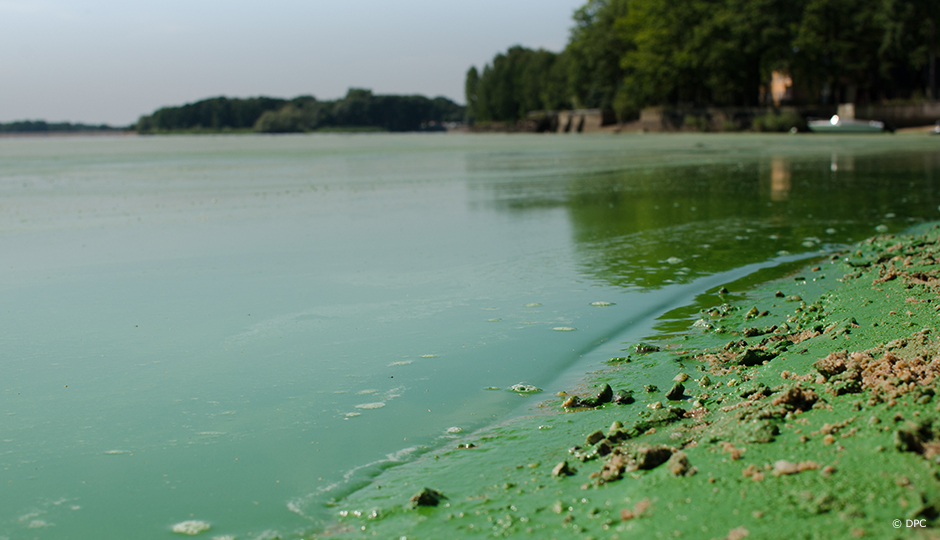Lakes and rivers in Québec are being constantly threatened each year by potentially toxic cyanobacteria outbreaks. The causes are not completely understood, but there is a consensus that nitrogen (N) and phosphorus (P) pollution from excessive manure and fertilizer applications on agricultural lands is one contributing factor to cyanobacteria formation. A series of integrated field, watershed and computer modeling studies was conducted over the 3 year period of 2008-2011, to examine the question of recurring cyanobacteria pollution in Baie Missisquoi.
A significant highlight of this project is that some innovative new analytical techniques and models have been developed for Québec conditions, which previously did not exist. This includes the use of stable isotopes and nuclear magnetic resonance to differentiate between different forms of N and P from both manure and fertilizer in surface runoff and tile drain discharges.
Results showed that nitrate-nitrogen was the most dominant loss of N loss. Total P in surface runoff was 2.5-5.5 times higher than total P in tile drain flow. Particulate P and its bioavailability were closely associated with clay content and Mehlich extractable P. These data enabled the use of computer simulations to predict the effects of tile drain spacing on P losses. The simulations showed that by increasing drain spacing from 5 to 70m could reduce P losses by one-half. Another innovative technique developed by the project was the use of quantitative real-time polymerase chain reaction (qPCR) to assess toxic vs non-toxic species of cyanobacteria in Baie Missisquoi. The toxigenic species of Microcystis, Anabaena and Planktothrix were detected in the Baie.
Work is currently on-going to relate these species to concentrations of N and P likely to be found in the Baie. A combination of field measurements and SWAT computer simulation studies showed that the P export coefficient for the Pike River watershed was approximately 1.0 kg/ha. Last but not least is that the data from the lab, field and watershed studies were used to build an Artificial Neural Network (ANN), to estimate cyanobacterial growth in Baie Missisquoi. A time series analysis of modeled and observed cyanobacterial concentrations obtained from MDDEP, showed that the model results closely mirrored the observed data, although the model predictions always resulted in underestimation of cyanobacterial cell numbers.
Main researcher: Chandra Alastair Madramootoo, McGill University
Original title: Mesures précises et approches innovantes en modélisation de la dynamique des nutriments en bassin et en plan d'eau contribuant aux fleurs des cyanobactéries




